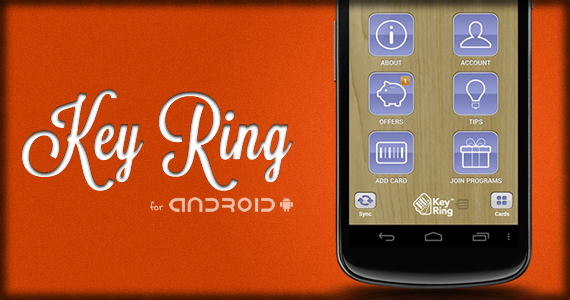
This practical mobile app review evaluates Key Ring for Android, a digital wallet solution addressing the common consumer problem of managing multiple physical membership cards and loyalty programs through smartphone-based barcode scanning and storage. Eric Wilborn provides a personal testimonial about eliminating "Fat Wallet Syndrome" by digitizing nine membership cards from wallet and keychain storage, highlighting the app's utility during the early smartphone adoption period when digital payment and loyalty solutions were emerging alternatives to physical card management. The coverage shows how mobile apps began solving everyday inconveniences through simple barcode digitization technology.
The features analysis covers Key Ring's straightforward card addition process through barcode scanning, automatic program recognition, and description customization, emphasizing the app's 3.2MB footprint that minimized device storage impact. Wilborn details the cross-device synchronization features through account creation, enabling users to access digital cards across multiple devices and maintain access even after device loss or replacement. The connection with retailer systems highlights compatibility with existing point-of-sale infrastructure without requiring merchant technology upgrades.
The feature evaluation explores advanced features including location-based membership program discovery, direct enrollment features, and partnership with Cellfire for digital coupon loading, specificly noting connection with Kroger grocery stores. The widget features and multi-device accessibility show the app's evolution beyond simple card storage toward complete loyalty program management. The user experience assessment emphasizes simplicity while acknowledging sophisticated backend features for program connection and offer management.
This Key Ring app review captures the transitional period when smartphone apps began replacing physical wallet contents, establishing foundations for modern digital payment ecosystems and mobile-first commerce experiences. Looking back 13+ years later, the barcode scanning and digital card storage concepts pioneered by apps like Key Ring evolved into complete mobile wallet platforms including Apple Pay, Google Pay, and Samsung Pay that now handle payment cards, identification, boarding passes, and loyalty programs through standardized NFC and QR code technologies. The membership program digitization addressed here anticipated the complete transformation of retail loyalty programs toward app-based engagement, personalized offers, and integrated shopping experiences that characterize modern omnichannel retail strategies. The cross-device synchronization capability influenced user expectations for seamless data portability that now extends across all digital services and cloud-based account management systems. The local program discovery feature anticipated location-based marketing and geofencing technologies that enable contextual offers and proximity-based engagement strategies widely used in modern retail applications. The partnership approach with companies like Cellfire and Kroger established patterns for platform connection that now characterize successful fintech and commerce applications requiring extensive merchant and service provider ecosystems. The simplicity emphasis showd here influenced mobile app design principles prioritizing user experience over feature complexity, establishing standards for consumer-facing financial and commerce applications. This moment represents early smartphone utility expansion beyond communication toward practical lifestyle upgrade, validating phones as essential tools for everyday task management and establishing user expectations for digital convenience that drive continued mobile commerce innovation and adoption.
This summary was created by Dave Rogers. The original post was written by Eric Wilborn and published on March 1, 2012.
If you'd like to view the original post, you can find it here.
